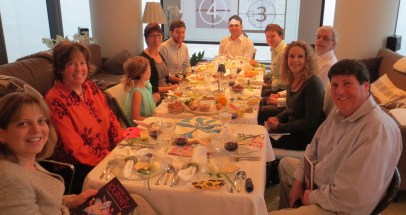On Monday the U.S. Supreme Court decided in a split decision to keep intact its perceived understanding of permitting sectarian prayer in civic meetings. Most of the American Jewish world is concerned. For instance, Rabbi David Saperstein of the Religious Action Center of Reform Judaism, issued this statement:
“We are deeply disappointed by today’s Supreme Court decision in Town of Greece, New York v. Galloway, upholding sectarian prayer before a legislative session. Writing for the majority, Justice Anthony Kennedy noted that requiring invocations be nonsectarian would call on the legislatures sponsoring these prayers and the courts to intervene and ‘act as supervisors and censors of religious speech.’ Yet, Justice Kennedy did suggest there were limits to such prayers, among them: denigrating non-believers or religious minorities, threatening damnation, or preaching conversion — leaving courts in exactly the same role as line-drawers. The record has shown that the overwhelming majority of prayers offered were Christian. That is why we were pleased to join an amicus brief to the Court, opposing the constitutionality of the town of Greece’s practices, along with a diverse array of faith and religiously-affiliated groups.”
Would I prefer the Court to have ruled differently? Yes. Am I surprised it did not. No. Futhermore, its decision does not bother me for three reasons.
1) From my understanding of the U.S. Bill of Rights, the onus is on the government not to unduly influence religious institutions, not the other way around. Whether or not this is “good for the Jews,” it does represent the tenor of the First Amendment. Law professor Stephen L. Carter makes this argument in an easy to understand way in his book, The Culture of Disbelief.
2) You cannot legislate class, common sense, or good manners. Those who will choose to make others uncomfortable with their exclusionary antics will find a way, like the couple at the restaurant last week who were behaving as if their public displays of affection were invited or at least easily tolerated. Ministers are not immune from making others uncomfortable. Like others, they are usually unaware of the harm they are causing. The Nine Justices couldn’t change that no matter how much they try.
3) The best way to help make our civic ceremonies more sensitive is to reach out to our neighbors and educate them about what inspires and what harms. This is an education challenge, a networking call-to-arms, not a judicial or congressional matter.
We have just celebrated Israel’s 66th birthday. I am so proud of Israel, even though I realize our Israeli brothers and sisters continue to face many external and internal challenges. One thing they don’t have to worry about is non-Jewish religious people making them feel uncomfortable in small town civic ceremonies. Living in America means we do face such a challenge. It reminds me of what has often been said about our democracy: it is the worst form of government ever devised, except for all the others.
In short, if you want to help make more of us feel welcome here, don’t look to D.C. Look across the street. And then cross it, handshake at the ready.
Edwin Goldberg, D.H.L., is the senior rabbi of Temple Sholom of Chicago and is one of the editors of Mishkan HaNefesh, the new CCAR machzor.











